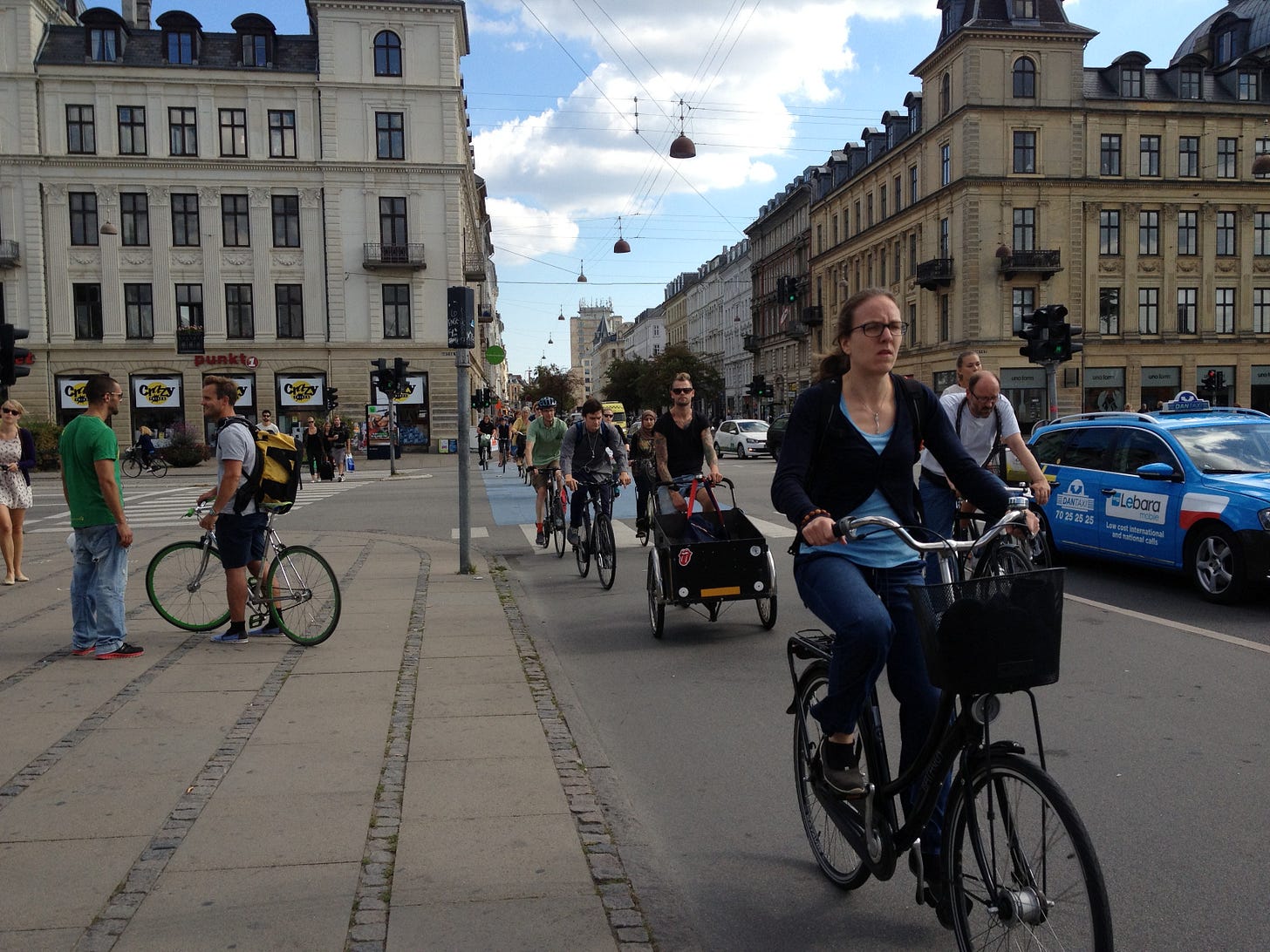Bike lanes are under attack across North America
When it comes to bike lanes, the policies of Donald Trump and Doug Ford are very similar.

Bike lanes are under attack across North America. In Toronto, Ontario, Premier Doug Ford is tearing out the main east-west bike lane that my daughter uses every day to get to work.
Many Torontonians are fighting to save the bike lanes, including staging protests at Stantec, the engineering firm hired by the province to do the bike removal work. An organizer, Alex Lam, told the CBC:
"We're talking about people's lives here," Lam said. "I think this action was good for highlighting this terrible thing that Stantec is doing. Agreeing to rip out bike lanes, put people at risk, increase congestion, increase emissions."
I suggested to one of the lawyers fighting to save the lanes that a complaint be filed under section 72(2) of the Professional Engineers of Ontario regulations because they are not safeguarding the lives of the people using bike lanes. A recent article in the Globe and Mail by two deans of engineering schools claims that “Canadian engineers are trained to prioritize safety, sustainability and inclusivity. This training extends beyond technical skills to encompass ethical decision-making and societal impact.” There are a lot of us who are questioning that statement when it comes to Stantec.
I noted previously that if Ford was serious about increasing economic independence from the USA, we should build more bike lanes, not rip them out, because Ontario gets most of its gasoline from the USA. Now that Canada is under economic attack by the USA, it makes more sense than ever to save bike lanes. According to Ratehub, the average cost of owning and operating a car in Canada is C$1370 per month, the third largest expense after shelter and food. Those costs just went up with every car and car part coming across the border being hit with a 25% tariff. Doug Ford should be doing everything he can to help people avoid driving, which is what bike lanes do.
Ford would also see other benefits; a recent study published in Scandinavia found that “Compared to passive commuters, a high dose of active commuting (mean of 61km a week) was associated with an eight to 12 per cent lower relative risk of sickness absence days and an 18 per cent lower relative risk of long episodes.” He would have healthier citizens and lower health care costs.
Meanwhile, back in the USA, the Department of Transportation is sending out memos looking to identify and kill bike lanes and electric vehicle infrastructure, particularly if they are in any way related to horrible things like DEI, climate change, or environmental justice, or “gender-specific activities:
Identify Programs for which award selections may have included any of the following elements: equity activities, Diversity, Equity, and Inclusion (DEI) activities, climate change activities, environmental justice (EJ) activities, gender-specific activities, when the primary purpose is bicycle infrastructure (i.e., recreational trails and shared-use paths, etc.), electric vehicles (EV), and EVcharging infrastructure. Additionally, project-by-project review of selections to identify any project scope elements for potential removal are required for any Programs that meet the criteria below:
Statutory language includes equity requirements, climate considerations, or bicycle infrastructure.
NOFO mandatory evaluation criteria include equity and/or climate requirements.
Eligible activities included bicycle infrastructure, EV and/or EV charging infrastructure.
According to Grist:
One DOT project manager, who requested anonymity to avoid professional retaliation, told Grist the memo and executive orders will make it “terribly difficult to use federal transportation dollars where it’s needed most.” That’s bad news for more than bike lanes: Sustainable transportation not only makes communities safer, it lowers travel costs; improves access to important services like medical care, schools, and work; and helps mitigate climate change. “It’s frustrating to see these solutions stall when so many communities urgently need them,” he said.
The DOT’s apparent plans to make roads safe for white males in pickup trucks fit perfectly well with everything else the US government is doing.
But what is Doug Ford’s rationale these days for doing something that will increase gas consumption and waste money in the face of an economic crisis? How does it look when Ford is aligning so closely with Trumpish policies? It made no sense before, and it makes less sense now.
Special Offer!
I do not want to put up a paywall on this site, but it provides a meaningful portion of my income. So here’s a limited time offer: I will send a signed copy of the print edition of “Living the 1.5 Lifestyle” to anyone in the USA or Canada who signs up for a one-year subscription (C$50, cheap at about US$34.95 ) If you live in London or Glasgow, I will bring them personally in late May, and we can arrange a pickup.









Policy makers are ignoring the demographic changes that mean that there will be fewer car drivers in the future. About 25% of the Canadian population is aged 65 or older and because people are living longer, that proportion of the population is growing ( another 15% will join the over 65 group in 5 years). People who are over 65 are less likely to own and drive cars because of health issues or budget issues ( Cataracts, glaucoma, fixed incomes). If you combine the proportion of the over 65 with the proportion of the under 18 year olds, it means about one third of the population is not driving cars. This may be even larger if those under the age of 30 cannot afford cars because of tariffs.
I suspect that even among the population that is driving cars, there are many that would prefer not to act as chauffeurs and would like the non-driving members of their families to get around by walking, public transit or cycling.
Provinces which pay for health care should consider that active transit such as cycling and walking has massive public health benefits, especially when those activities are safe and accessible for all ages and abilities. From a business standpoint, it is rather silly to not provide ways for about a third of the population to be able to access your services.
I am one of those over 65 living on a fixed income. I do not own a car and generally do not patronize businesses that I cannot walk or cycle to. I do use a car share program occasionally. But the businesses that get the lion's share of my dollars are pleasantly, safely and easily accessible by cycling or walking.
It’s so weird what fiscal conservatives think is worth spending gobs of money on. You’d almost think the “fiscal” part was some kind of ruse.